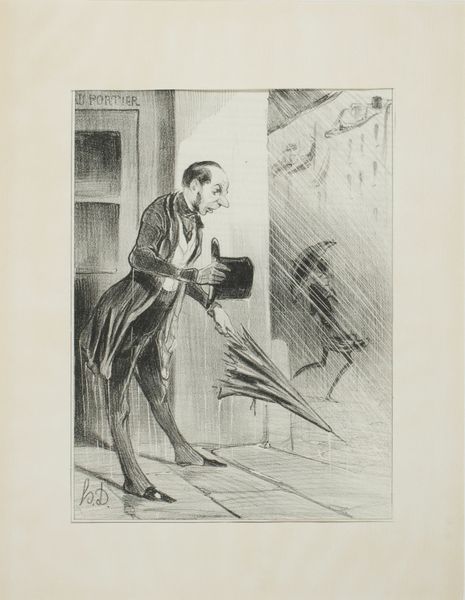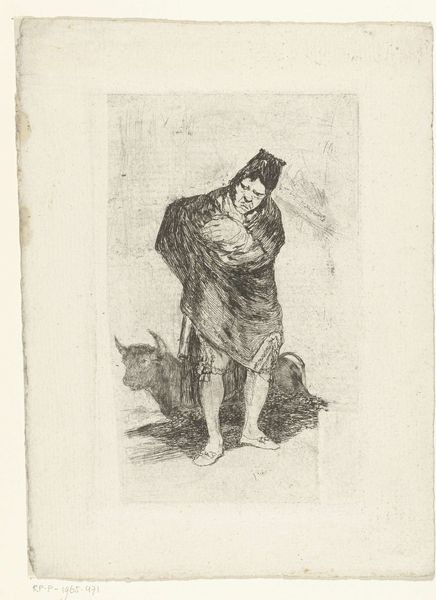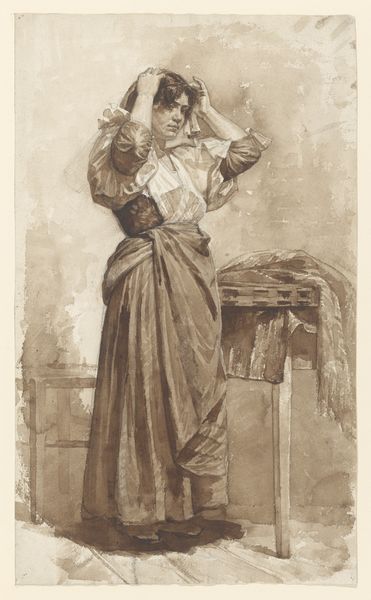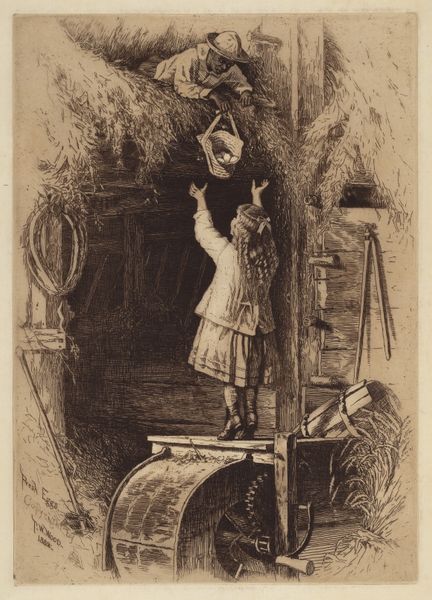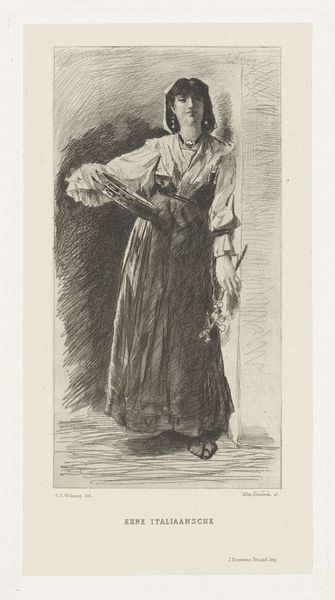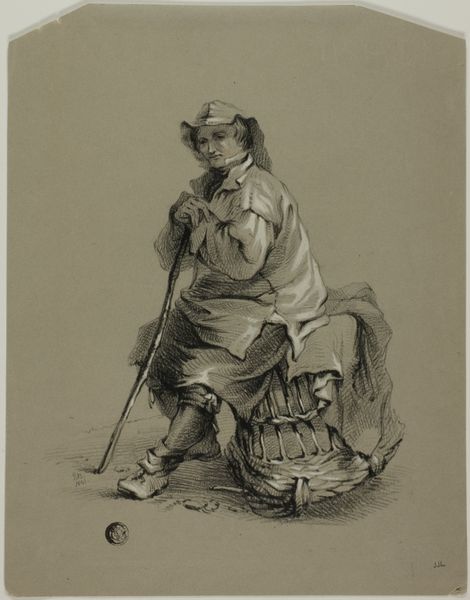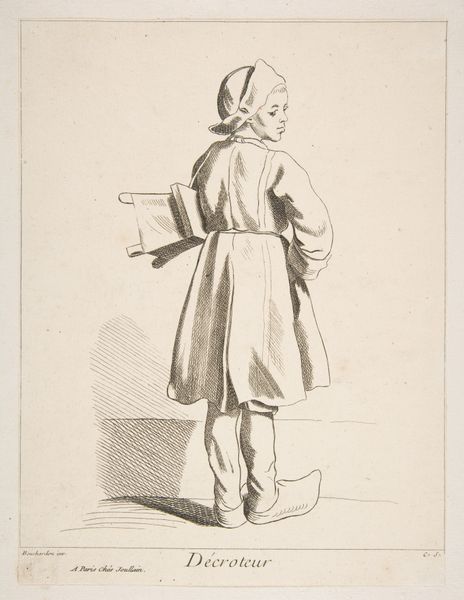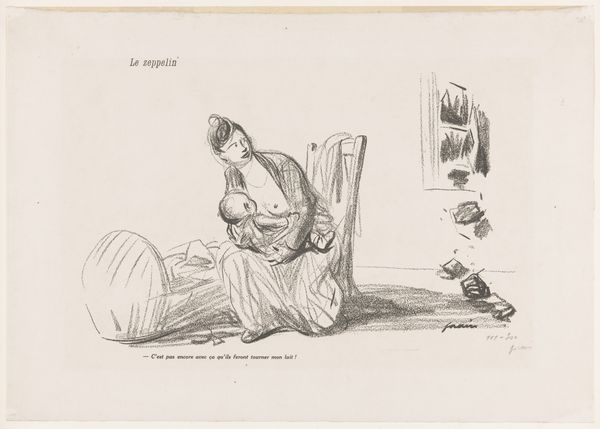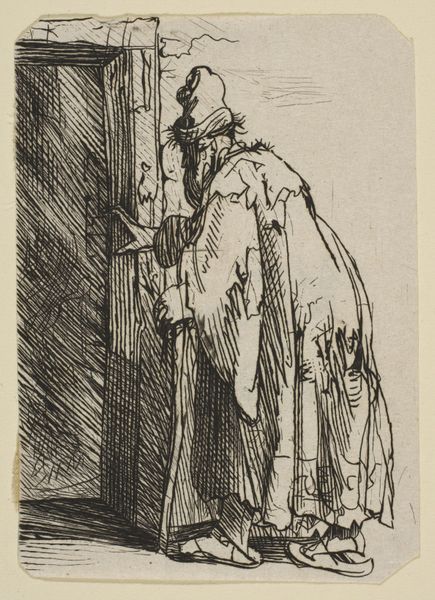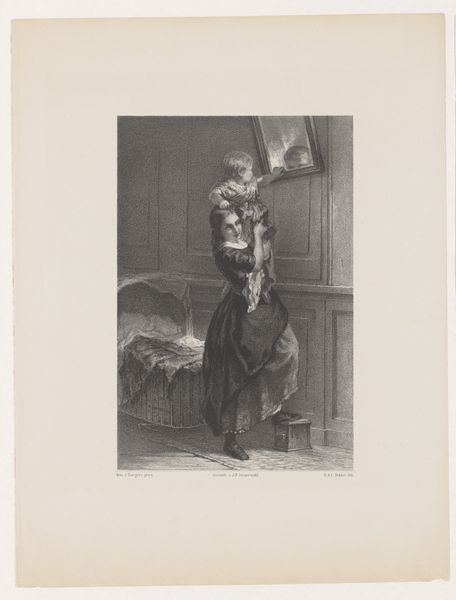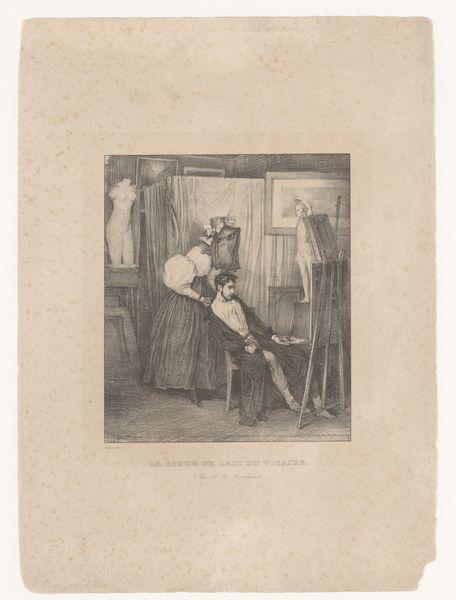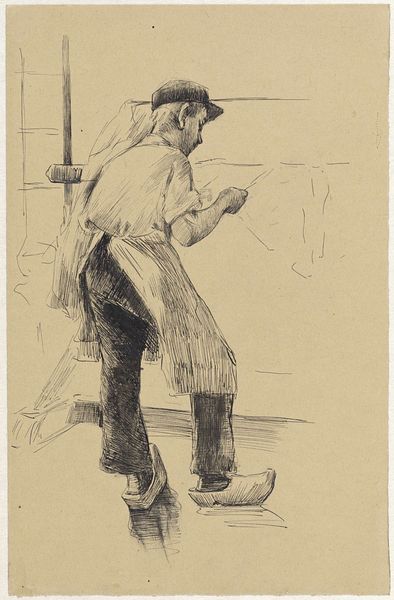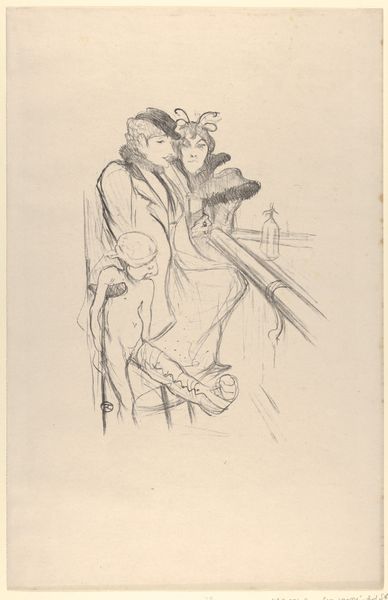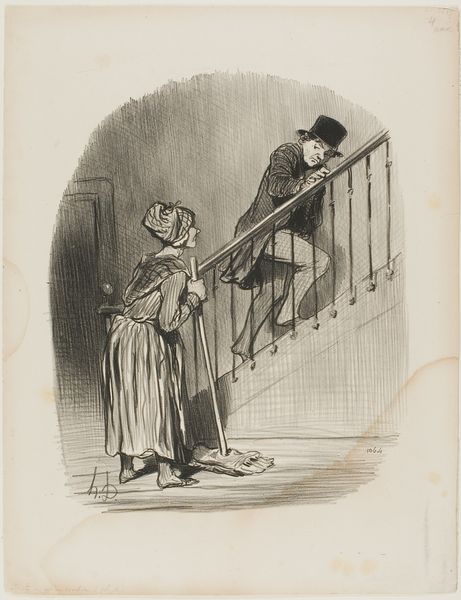
drawing, print, pencil
#
portrait
#
drawing
# print
#
figuration
#
pencil
#
portrait drawing
Dimensions: Sheet: 10 1/8 × 7 3/4 in. (25.7 × 19.7 cm)
Copyright: Public Domain
Editor: Right now, we’re looking at “A Tight Fit,” a pencil drawing and print from 1872 by Charles Samuel Keene, now housed at the Met. I find the composition striking - there's something really engaging about the subject's pose and expression as he seems to be grappling with something. How do you interpret this work, especially in terms of its form? Curator: Formally, observe how Keene employs line and shadow to convey texture and volume. The cross-hatching technique in the figure’s clothing, the drapery, and the suit form gives a sense of depth to an otherwise flat surface. Note the repetition of near-parallel diagonal lines. It creates movement and leads our eyes. Also, consider the title – how does the literal and figurative 'tightness' inform the work? Editor: The "tightness" you mention – I wonder if the implied restriction adds to the drawing's humor? Curator: Indeed. Now, look closely at the relation between the composition and expression, notice the subject's exaggerated stance, leaning on a walking stick as he tries on his jacket with a disgruntled facial expression and how these elements work in concert. The figure feels constricted, which emphasizes this very notion. This also speaks to the graphic quality of the artwork: consider its publication history. Editor: I see what you mean about the subject’s physical discomfort, I never thought to tie that to the context and style. I’ll certainly look closer from now on, and consider every detail from style to publication, thank you! Curator: Exactly, that visual language constructs meaning. Remember to consider those lines, shapes, forms; they are never neutral.
Comments
No comments
Be the first to comment and join the conversation on the ultimate creative platform.
